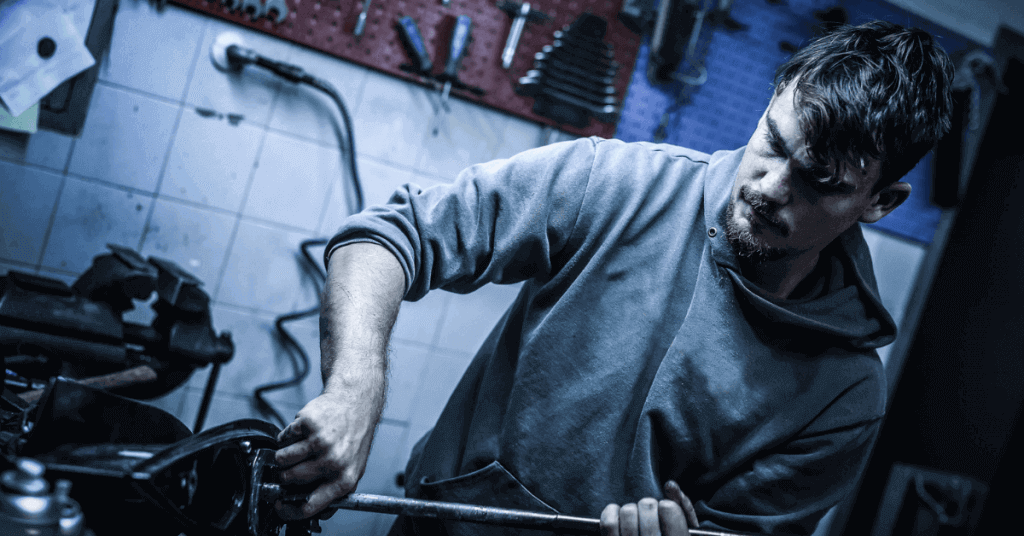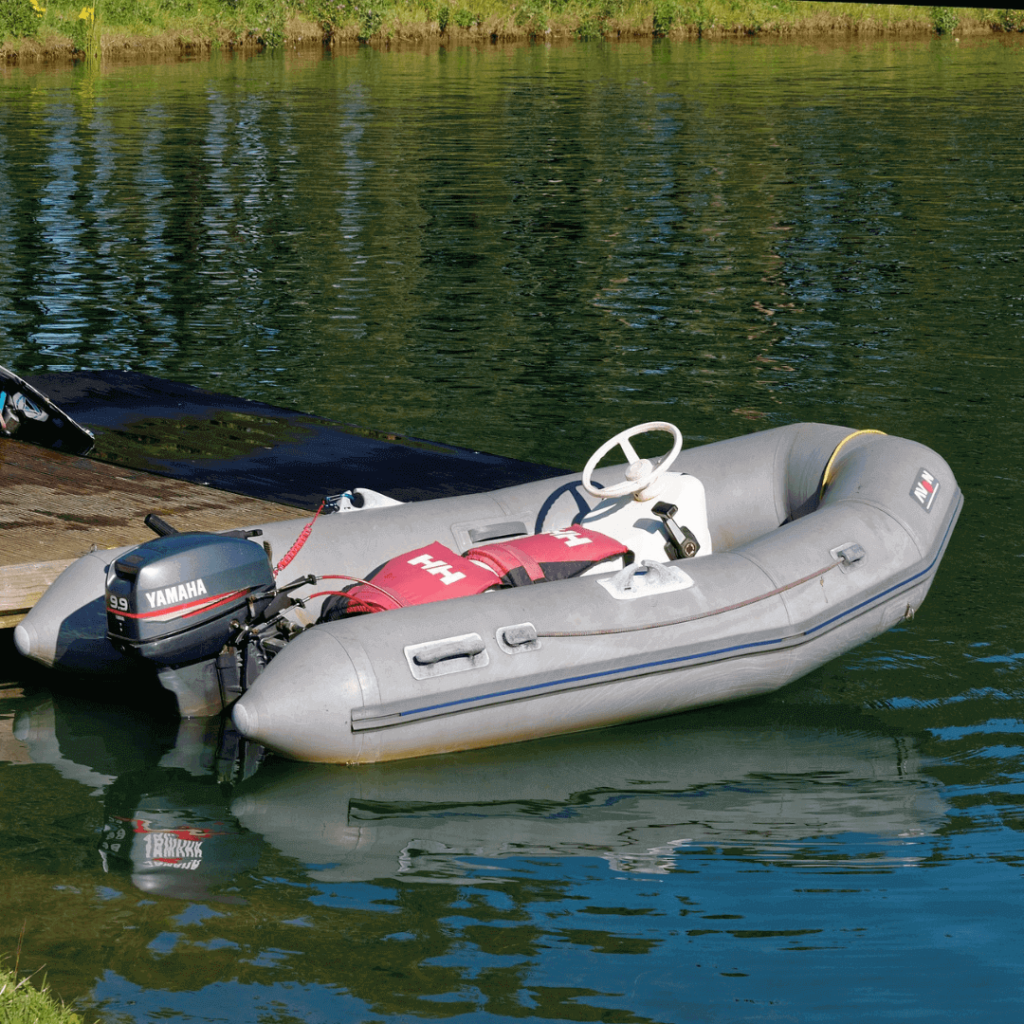Anyone who travels on a body of water either on a personal boat or a rented one with an outboard motor should learn how to repair an outboard motor. This is because you can never tell when the outboard motor may become faulty, and you should be able to make minor repairs on the water without having to call for help. Outboard motor faults on the water body can bring an end to an otherwise fun-filled day and cause you to panic.

- What is an outboard motor?
- Functions of the parts of an outboard motor
- Things to carry along with you when you travel on water in a boat with an outboard motor
- How to maintain your outboard motor
- Check the spark plugs before you start out
- Change the fuel in the engine regularly
- Change the water pump impeller
- Frequent lubrication
- Remove debris in the outboard motor after each outing
- Check for fuel leaks after each trip
- Use anti-corrosion spray
- Use a skeg guard
- How to repair an outboard motor
- What should you do if the engine will not start?
- What should you do if the engine consumes too much fuel?
- What should you do if your engine stops suddenly in motion?
What is an outboard motor?

An outboard motor is a motor that provides propulsion and steering control for boats. The parts of an outboard motor include the engine, gearbox, propeller or jet drive, skeg or lower unit, water intake, anti-ventilation plate, mounting bracket, and tiller.
A bit of history, Gustave Trouvé built the first outboard motor in 1870, and this was electric-powered. Ole Evinrude was the first to make an outboard motor that ran on gasoline in 1909 and was very successful.
Functions of the parts of an outboard motor
The engine of an outboard motor causes motion by fuel combustion in metal cylinders. The gearbox is used to increase or decrease the speed of the boat. You increase the speed of the boat by opening up the gearbox.
The outboard motor powers the propeller or jet drive and enables it to move the boat through the waters. The anti-ventilation plate, also called the anti-cavitation plate, prevents cavitation and wearing away of the propeller’s or jet drive’s surface.
The skeg or lower unit performs steering control and can be used to turn the boat with precision. The skeg also protects the jet drive from debris. The mounting bracket is where the outboard motor is affixed to the back of the watercraft. The tiller is a detachable part of the outboard motor that is not always present but can be used to provide the leverage needed for steering control. The water intake is an important part of the cooling system in an outboard motor that allows water into the water pump.
Things to carry along with you when you travel on water in a boat with an outboard motor
You never can tell when your outboard motor will develop a fault and need repair. Therefore, this is a comprehensive list of things to carry along with you. They include outboard oil, waterproof grease, a set of spark plugs, fuel-water-separator filter, Ziploc baggies, socket set with an extension, convertible screwdrivers with straight, Phillips and Torx heads, side cutters, Vice-Grip pliers, a spare propeller with cotter pins and thrust and lock washers, battery connectors and fuses, prop wrench, zip ties, electrical tape, duct tape, anti-corrosion spray, and a stiff wire brush.
The outboard oil: The outboard oil serves as a lubricant for your outboard motor engine. In a two-stroke engine, the oil mixes with the fuel to lubricate the engine, whereas only the oil lubricates it in a four-stroke engine.
Waterproof grease: Waterproof grease is used to lubricate the steering, pivot points, and trailer bearings.
Spark plugs: When you start your outboard motor engine, spark plugs conduct electricity from one end and use this to ignite air, which creates the combustion that starts the boat.
Fuel-water-separator filters: The fuel filters prevent water that gets into the fuel from getting into the system.
Ziploc baggies: Ziploc baggies can act as a temporary store for siphoned water that got into the fuel for disposal later.
Socket set and extension: The socket set is what you need to change your outboard motor spark plugs. A socket extension may facilitate getting to the spark plugs easily.
Convertible screwdrivers with straight, Phillips, and Torx heads: Convertible screwdrivers with straight, Phillips, and Torx heads can be used to install and remove screws on the outboard motor.
Vice Grip Pliers: Vice Grip Pliers are used for clamping, holding, and removing broken screws.
Side cutters: Side cutters are used for cutting wires.
Battery connectors and fuses: Battery fuses can help to prevent a fire.
Prop wrench: A prop wrench is used to install and remove propeller nuts.
Zip ties: Zip ties are used as clamps on fuel lines.
Electrical tape: An electrical tape is used to insulate electrical wires.
Duct tape: Duct tape is used to hold two pieces together.
Anti-corrosion spray: An anti-corrosion spray prevents the outboard motor engine from rusting. It is usually a silicone spray.
Stiff wire brush: A stiff wire brush is used to clean the outboard motor engine steering tubes.
How to maintain your outboard motor
Regular maintenance of your outboard motor is crucial for it not to develop faults that will require you to repair it. This is because the outboard motor is exposed to very harsh conditions on the water, and this can increase the rate at which it becomes faulty if it is not regularly maintained. So, how can you maintain your outboard motor?
Check the spark plugs before you start out.
The spark plugs are the most common cause of an electric related problem which will require you to repair your outboard motor. Therefore, you should always check that the spark plugs work well before you go for a day on the boat. The low revving sound of the engine indicates that you should change the spark plugs. Always carry spare spark plugs, socket sets, and extensions with you on the boat.
Change the fuel in the engine regularly.
It would help if you looked at the fuel in the fuel tank before you begin your day on a water body. This is because water can get into the fuel, and, in the absence of a fuel filter, can enter into the system and damage your outboard motor.
Change the water pump impeller.
It is good maintenance practice to change your water pump impeller every two years if your course is freshwater or every year if your course is saltwater.
Frequent lubrication
Make it a habit to regularly use waterproof grease to lubricate moving parts of your outboard motors like the steering and pivot points.
Remove debris in the outboard motor after each outing.
Debris reduces the water pump’s pumping force and can damage the outboard motor if it accumulates over time. Therefore, thoroughly flush your outboard motor after each outing and remove all debris. Remember to check for good water flow while flushing. If the water flow is weak or the water is hot, immediately stop the engine and check for debris.
Check for fuel leaks after each trip.
After each trip, take off the cowling, which covers the engine. Then examine for fuel leaks and consult your mechanic if a fuel leak is found.
Use anti-corrosion spray
Use anti-corrosion spray on the engine to prevent it from rusting. It would help if you also sprayed the zip ties on the fuel lines to prevent corrosion.
Use a skeg guard
Use a skeg guard to prevent damage to your outboard motor’s skeg or lower unit if it strikes an underwater object.
How to repair an outboard motor
The best way to approach this topic is to discuss the various faults that your outboard motor can develop and how to repair it if it develops such faults.
What should you do if the engine will not start?
One of the most common reasons your outboard motor engine will not start is if the motor has faulty spark plugs. So, it is always good to change the spark plugs if your outboard motor engine does not start. This fixes this problem most of the time.
What should you do if the engine consumes too much fuel?
Faulty spark plugs are also the culprits when your engine consumes too much gasoline. Another indicator that the spark plugs are bad is if the engine makes low revving sounds.
What should you do if your engine stops suddenly in motion?
Most problems that will cause your engine to stop suddenly in motion are fuel related. Water may have passed into the fuel. Most times when this happens, the engine alarm will go off before the engine shuts down. This is why it is important to carry a spare fuel filter and Ziploc baggies. The filter can separate fuel from water, and the Ziploc baggies can serve as a store for the siphoned water. The engine should start again if this is well done.
